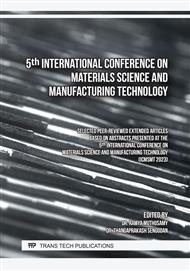p.111
p.125
p.137
p.149
p.161
p.171
p.185
p.197
p.205
Stabilization of Clay Using Groundnut Shell Ash and Sugarcane Bagasse Ash
Abstract:
In the specialty of civil engineering, soil is the most often utilized material. It is employed in building foundations, bricks, and pavements. It offers a lot of strength to keep the construction stable. Throughout the ground, there are several types of soil. It is dependent on the material's size, texture, and other characteristics. It is required to stabilize the soil using various stabilizers in order to improve its qualities. With a view to lowering the cost of construction, the emphasis is obviously on the correct use of waste residues like groundnut shell ash and bagasse ash. One method of processing the available resources for the creation of help minimize design and construction is stabilization. In this work, we investigate the possibilities of using groundnut ash and sugarcane bagasse ash as stabilization additions to boost the expanding soil's characteristics. Groundnut shell ash ranging from 0 to 20% and sugarcane bagasse ash amounts ranging from 0 to 10% were added to improve the materials' strength and suitability for application. It also investigated the temporal evolution of many soil parameters, such as the plastic limit, liquid limit, shrinkage limit, maximum dry density, ideal moisture content, and unconfined compression strength. The optimal amount to stabilize the clayey soil is 10% GSA and 5% BA.
Info:
Periodical:
Pages:
197-204
Citation:
Online since:
October 2023
Authors:
Keywords:
Price:
Сopyright:
© 2023 Trans Tech Publications Ltd. All Rights Reserved
Share:
Citation:



